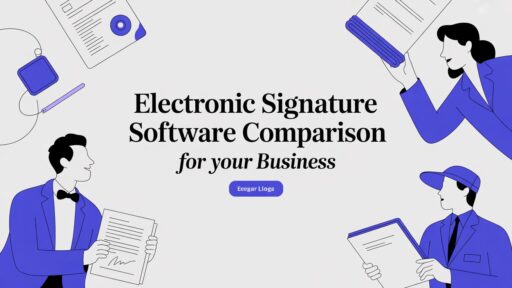In the digital age, technology’s permeation into every facet of life is undeniable. One such area that’s seen a significant transformation is the healthcare sector, with the advent of tools like doctor signature generators. These tools, albeit less talked about, are reshaping the way medical professionals operate.
Doctor signature generators not only streamline the process of signing numerous documents but also add an extra layer of security. They’re a boon for busy practitioners who need to maintain the authenticity of their documentation while saving time. This article will delve into the world of doctor signature generators, their benefits, and how they’re revolutionizing the healthcare industry.
Understanding the Concept of a Doctor Signature Generator
Stepping into the realm of doctor signature generators, the focus is on their function and necessity in the modern medical world. Carving out their space in the healthcare industry, these digital tools serve as a valuable asset for medical professionals’ documentation demands.
Why Do Doctors Need a Signature Generator?
Doctors, amid mounting medical procedures, patient consultations, and paperwork, experience an urgency for streamlining their processes. A doctor signature generator falls into this efficiency, enhancing the signing of multifarious documents. For instance, prescriptions, discharge summaries, and consent forms recur regularly in a doctor’s routine. Rather than physically signing multiple copies, this tool allows doctors to generate their signatures with a click, conserving their crucial time for patient care.
Moreover, it alleviates concerns regarding signature forgery or misuse. A digital signature, unlike a hand-written one, incorporates unique identifiers—providing unparalleled security. By adopting a doctor signature generator, medical professionals thus ensure safety, credibility, and efficiency in their administrative practices.
The Role of Technology in Medical Administration
Technology has become a cornerstone for progress, and the medical administration sector is no different. Leveraging tools like the doctor signature generator realizes enhanced workflow processes, reduces manual errors, and fosters quick responses. It forms a key component in Electronic Health Records (EHRs), expediting their filling-out, signing, and forwarding.
Additionally, technology integration eliminates geographical barriers, enabling telehealth consultations where doctor signatures are necessary. Providing accessible healthcare services, even remotely, is thus feasible through medical administration technology.
Finally, with rapid advancements, these digital tools are becoming more user-friendly, promoting their widespread adoption in the healthcare sector. Thus, the alliance of a doctor signature generator and medical administration technology synergizes to de-stress the demanding work-life of healthcare professionals.
Exploring Popular Doctor Signature Generator Options
As the healthcare workplace evolves, doctor signature generator options grow in number. To help medical professionals navigate their choices, this section scrutinizes notable digital signature software and their distinguishing characteristics.
Digital Signature Software for Healthcare Professionals
Doctor signature generators rank high among digital tools for healthcare providers. Notable among these software options are DocuSign, PandaDoc, and HelloSign. Each offers distinct features tailored to simplify medical administration and enhance efficiency.
Adjacent to these, in-demand generators like Adobe Sign, SignNow, and PDFfiller also find favor among healthcare professionals. These platforms provide comprehensive solutions, simplifying the process of signing prescriptions, discharging summaries, and filling consent forms.
Distinguishing Features of Top-Rated Doctor Signature Generators
Understanding what separates exemplary doctor signature generators is essential for informed choice-making. Prime generators stand out with features such as authentication and verification functions, aiding in maintaining security and reducing manual errors. These features ensure the digital signatures are legal, complying with regulations like the ESIGN Act.
Moreover, top-rated signature generators offer time-stamping, signifying when digital documents were signed. Also, they offer multi-factor authentication for added security.
Accessibility and ease-of-use are other standout features. Most platforms are compatible with various devices and operating systems, promoting accessibility to healthcare services, even during telehealth consultations. Furthermore, these systems ensure safe document-storage and efficient management, contributing to improved workflows within healthcare facilities.
In sum, doctor signature generators play a pivotal role in modern medicine, assisting doctors in managing their documentation demands. Identifying the right digital solution hinges on understanding distinguishing features and aligning with specific needs.
How to Choose The Right Doctor Signature Generator
Picking a doctor signature generator warrants careful consideration, given its implications for healthcare operations. The criteria for selection hinge on the specific needs of healthcare professionals and the software’s security features.
Considering Your Specific Needs as a Healthcare Professional
Respecting individual workflows and refining selection to match unique requirements ensures maximum utility from a doctor signature generator. For instance, doctors serving in rural localities or those often involved in telehealth may need accessible, mobile-friendly solutions. Features such as ease of use, the fluidity of integration into existing systems, and responsive customer service (Common examples include DoctorSign, Adobe Sign, and SignNow) should be addressed.
Similarly, healthcare institutions with a heavy influx of documentation may require high-volume handling capabilities, robust storage solutions, and advanced search features for seamless database management. Citing an example, platforms like PandaDoc and PDFfiller often facilitate these.
Evaluating Software Security Features
An integral facet of doctor signature generators, the security of electronic signatures upholds the integrity of medical documents. Users must consider encryption capabilities, adherence to international standards (ESIGN Act or eIDAS), and built-in audit trails (features commonly found in trusted solutions like DocuSign and HelloSign). Attention to the provisions for multi-factor authentication aids in mitigating the risk of signature forgery or unauthorized access. Furthermore, platforms providing regular security updates are always a better bet, ensuring continuous shielding against potential cyber threats. Thus, software security stands as a paramount determinant in the final choice of the doctor signature generator.
Tips for Using a Doctor Signature Generator
This section delves into some valuable tips for utilizing a doctor signature generator to streamline healthcare services. The focus centers on integrating the software into your workflow effectively and maintaining the integrity of your digital signature.
Integrating Signature Generator Software into Your Workflow
Optimal use of a doctor signature generator involves seamless integration into your existing workflow. Start by familiarizing yourself with the software’s interface, navigation, and functionalities. Explore the software’s configurations, particularly settings related to document processing speed, notification options, and integration with email or enterprise applications. Leverage the training resources and guides provided by software developers to shorten your learning curve.
Incorporating signature generator software into the daily tasks requires initial configuration and anticipating changes in the workflow. You may need to adjust your document sign-off processes, routing, and archiving methods.
Tailor the software settings to meet your specific needs. If you deal with telehealth services, enable mobile accessibility. For institutions handling a high volume of documents, consider automating as much as possible, from document preparation to sign-off.
Best Practices for Maintaining Signature Integrity
Maintaining the integrity of your digital signature is paramount in healthcare settings. Choose a doctor signature generator with robust security features, ensuring the authenticity of your digital sign-offs.
Ensure the software adheres to industry standards for digital signatures, offers multi-factor authentication, and maintains an audit trail of every signed document. This is important as it provides a record of who signed, what they signed, and when they signed it.
Regularly update your software to safeguard against potential security vulnerabilities. Remember, older versions might not have the latest encryption measures, putting your digital signatures at a risk.
Confirm usage of modern encryption measures by your software like RSA, AES or Elliptic Curve Cryptography (ECC), to ensure your digital signatures are secure. Making informed choices that align with security needs is crucial in maintaining signature integrity while leveraging modern medical technology.
Potential Legal Implications of Using a Doctor Signature Generator
As the digital revolution enhances the healthcare industry, it’s critical to recognize and understand the potential legal implications that accompany the use of innovative technologies, such as a doctor signature generator. In specific regard to this tool, we will be examining the salient ethical guidelines and the extent of your liability when engaging these systems.
Ethical Guidelines for Use
Adherence to ethical guidelines lies at the foundation of any professional practice, and it’s no exception when deploying digital tools like doctor signature generators. Digital signatures are subject to the same ethical expectations as traditional handwritten signatures. For instance, it’s imperative to secure explicit consent from patients before applying their digital signatures. Additionally, healthcare providers bear the obligation to protect these signatures from unauthorized access, mirroring the privacy protections offered to patients under the Health Insurance Portability and Accountability Act (HIPAA).
A violation of these practices can lead to severe consequences, including reputational damage, legal proceedings, or sanctions from professional bodies. Utilizing a doctor signature generator with robust security features helps maintain trust and uphold ethical commitments.
Understanding Your Liability
The usage of a doctor signature generator, while beneficial, also implies a legal liability. The Electronic Signatures in Global and National Commerce Act (ESIGN) and the Uniform Electronic Transactions Act (UETA), both prominent in US legal frameworks, recognize electronic signatures as legally binding.
However, there’s liability when the integrity of these digital signatures is compromised due to negligence or lack of proper security safeguards. Healthcare professionals can be held accountable if there’s a breach, unauthorized access, or misuse of patient data. Therefore, a thorough comprehension of legal responsibilities and potential liabilities, coupled with the prudent choice and proper use of a doctor’s signature generator, is paramount in today’s technologically advanced healthcare environment.
Case Studies: Successful Examples of Doctor Signature Generator Use
1. Swift Adoption at a Major Boston Hospital
A renowned hospital in Boston adopted a reputable doctor signature generator and witnessed improved efficiency. By implementing this technology, the hospital reduced time-consuming manual processes. Before adoption, it took physicians an average of 14 minutes to complete paperwork per patient. After employing the signature generator, this time dropped to a mere two minutes, enabling doctors to dedicate more time to patient care.
2. Seamless Integration in a New York City Clinic
A bustling clinic in New York City adopted a doctor signature generator, fully integrating it with their existing Electronic Health Records (EHR) system. This integration facilitated immediate accessibility to patient records, aiding in patient tracking and ensuring better treatment outcomes. Post-implementation, the clinic reported a 27% efficiency increase and a reduction of paperwork-related errors by 36%.
3. Advanced Security Measures at a Midwest Healthcare Facility
Striving to safeguard patient data, a Midwest healthcare facility turned to a doctor signature generator with advanced security features. This step not only improved data security but also guaranteed compliance with the Health Insurance Portability and Accountability Act (HIPAA), ESIGN, and UETA. Following this implementation, there was a noteworthy decline in data breaches, evidence of the efficacy of secure digital signature solutions.
4. Enhanced Patient Accreditation in a Southern California Nursing Home
A Southern California nursing home used a doctor signature generator to streamline the patient consent process. As a result, patient accreditation for procedures became quicker and simpler, with digital signatures replacing physical signatures. Post-adoption, patient consent, and accreditation registered a 32% increase in speed, effectively reducing procedural delays.
These cases provide a glimpse into the powerful potential of doctor signature generators. By adopting this technology, healthcare facilities can reap substantial operational efficiency improvements, provide better patient care, and remain compliant with laws and regulations. Templates, time stamps, and audit trails serve as inbuilt features, adding value while reinforcing security measures. Consequently, healthcare facilities can mitigate risks, thereby ensuring patient consent, data integrity, and legal compliance.
Discover the Power of BlueNotary:
Integrate your Business, Title Company, or Law Firm to Satisfy your Customers and Decrease Turnaround
Get a document Notarized/Sign-up
Join the Free Notary Training Facebook Group
Conclusion
Doctor signature generators have clearly transformed healthcare operations. They’ve not only streamlined processes but also significantly enhanced patient care. The case studies of a Boston hospital, a New York City clinic, a Midwest healthcare facility, and a Southern California nursing home all testify to the remarkable efficiency and security benefits of these digital tools. With features like templates, time stamps, and audit trails, they’ve successfully mitigated risks while ensuring compliance with HIPAA, ESIGN, and UETA. It’s evident that doctor signature generators like DocuSign and PandaDoc are revolutionizing the healthcare sector, making paperwork less time-consuming, maintaining digital signature integrity, and integrating seamlessly with existing systems. They’re truly a testament to the power of technology in improving healthcare delivery.
What are the benefits of using a doctor signature generator like DocuSign or PandaDoc in healthcare?
Doctor signature generators offer several benefits, such as improved operational efficiency, better patient care, and legal compliance. They also have built-in security features that enhance data security and mitigate risks.
How have doctor signature generators improved operational efficiency?
Case studies have shown significant operational improvements. For instance, a major Boston hospital cut paperwork time per patient from 14 to 2 minutes, and a New York City clinic integrated the technology with their EHR system, yielding a 27% efficiency increase.
Can these platforms aid in legal compliance?
Yes, they can. A Midwest healthcare facility enhanced data security and compliance with laws and regulations like HIPAA, ESIGN, and UETA through doctor signature generators.
How do doctor signature generators enrich patient care?
By reducing paperwork and administrative time, healthcare staff can focus more on direct patient care. Moreover, it streamlines processes, as seen in a Southern California nursing home, which sped up patient consent processes by 32%.
What security features are integral to doctor signature generators?
They often come with features such as templates, time-stamps, and audit trails that not only enhance security but also serve as evidence of compliance and due diligence, thereby mitigating risks.








